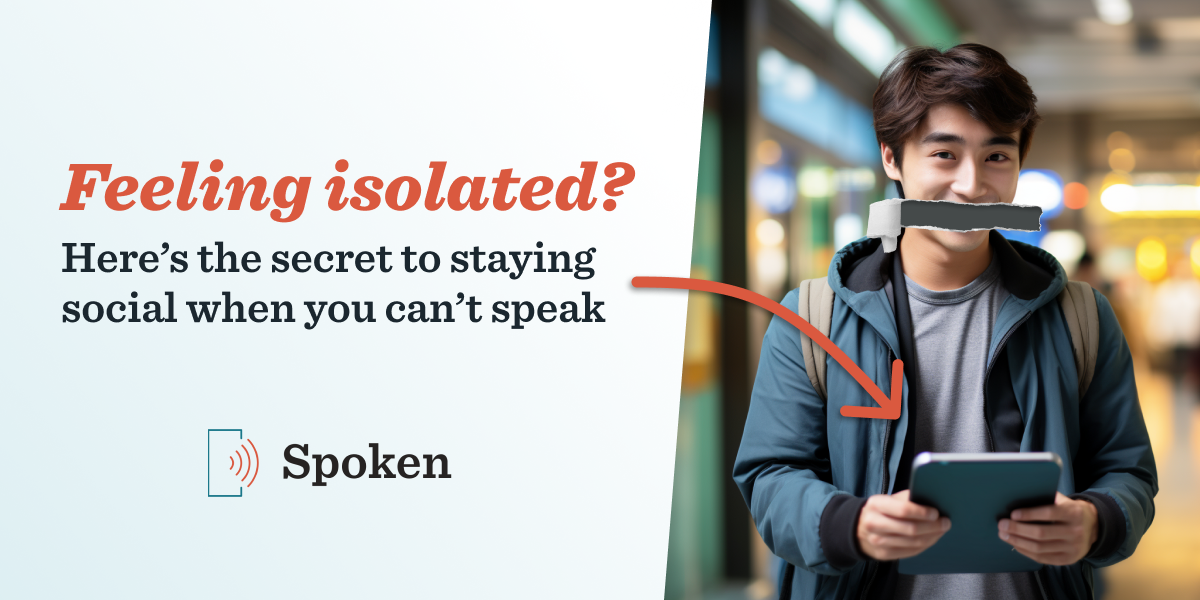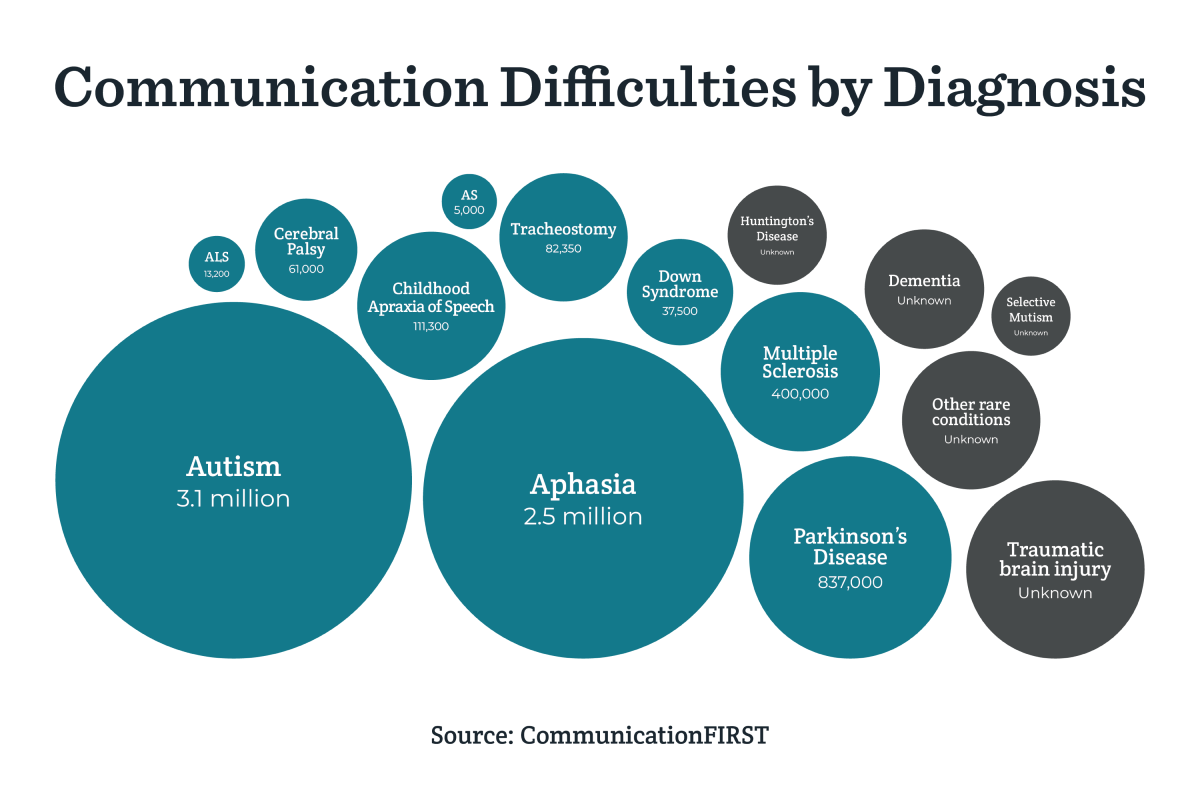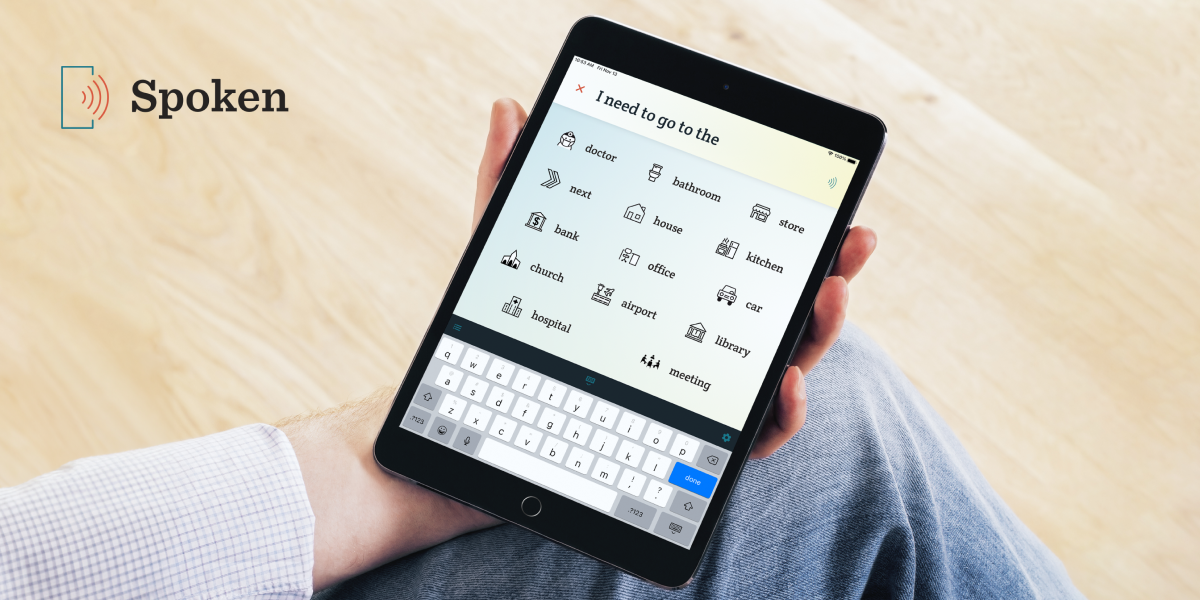How People with Communication Disorders Can Overcome Isolation

In a world where connection is paramount, the inability to communicate effectively can lead to profound feelings of isolation. This isolation, in turn, can take a devastating toll on one’s mental health. Yet, millions of people have speech and language disorders that impede verbal communication. Thankfully, Augmentative and Alternative Communication (AAC) technology offers a way to avoid or escape social isolation and significantly improve overall well-being.
Social Isolation and its Impact on the Mind
Social isolation isn’t necessarily the same as physical isolation; it’s a deep emotional divide that can lead to a range of negative consequences for mental health. Human beings are inherently social creatures that thrive on connections and interactions. When someone faces social isolation, they’re likely to experience feelings of loneliness, frustration, and worthlessness, as well as other negative thoughts.
Although anyone can face social isolation, the risk is understandably higher for those who experience challenges with communication. That’s not a small number of the population—several million people struggle to communicate via speech or lack the ability to speak altogether. There’s no single ailment at work here—difficulties with speech are often a byproduct of another condition (some of the more familiar causes include autism, Parkinson’s disease, ALS, multiple sclerosis, and dementia).

Unfortunately, the negative feelings inherent to social isolation can exacerbate communication difficulties for certain people and perpetuate the cycle. It’s a tough spot to be in, but there’s a simple solution:
Stay Social and Escape Isolation with AAC
Fortunately, the inability to communicate verbally does not mean someone is doomed to isolation. To replace or supplement verbal communication, many individuals utilize assistive technology—specifically Augmentative and Alternative Communication (AAC). AAC refers to a powerful set of tools and strategies that enable individuals with speech and language challenges to connect with others, share their thoughts, and express emotions when traditional methods of communication like speech fail or become difficult.
There are many different types of AAC (for more on that, see our article “What is AAC?”), but AAC devices and apps are probably the most useful option when it comes to breaking isolation. These technological solutions can give the user a voice via speech synthesis, making them ideal for social settings. Our mobile app, Spoken, is a good example of this.

Fostering Connections
AAC technology helps break down the walls of isolation by enabling individuals to engage in meaningful conversations and interactions. This newfound ability to connect with others on a deeper level can alleviate the loneliness that often accompanies communication challenges.
Sustaining Relationships
Relationships are built on communication, and AAC empowers individuals to nurture and sustain connections with loved ones. Whether it’s chatting with family, friends, or caregivers, AAC ensures that individuals don’t have to face isolation alone.
Reclaiming Independence
The self-sufficiency that AAC technology offers is crucial in reducing social isolation. Individuals gain the means to participate in various aspects of life, from sharing experiences to making decisions, ultimately regaining a sense of control over their lives.
AAC Beyond Isolation
The benefits of AAC extend beyond breaking the chains of isolation. The newfound ability to communicate enhances educational experiences, promotes vocational opportunities, and contributes to a more inclusive society. When individuals are empowered to express themselves, they can actively participate in classrooms, workplaces, and social gatherings, fostering a greater sense of belonging. For more on how AAC can benefit individuals, check out our past post, “AAC Isn’t a Last Resort.”
Why More People Aren’t Embracing AAC
One of the most significant barriers preventing the widespread adoption of Augmentative and Alternative Communication (AAC) technologies is a simple yet impactful one: lack of awareness. Even a lot of the people who could directly benefit from AAC simply do not know that the technology exists. This is particularly concerning given that AAC has the potential to be a lifeline for individuals with communication disorders, helping them break free from the debilitating grip of social isolation. When individuals are left to navigate the complexities of social interaction without the aid they need, they are more likely to withdraw, missing out on meaningful relationships and experiences. This isolation can have severe repercussions, affecting mental health, self-esteem, and overall quality of life.
Becoming an Advocate
Now that you understand the critical role that awareness plays in the adoption of AAC technologies, you might be wondering how you can contribute to this cause. The good news is that there are several simple ways you can make a difference, whether you’re directly affected by communication disorders or simply an ally who wants to help:
Educate Yourself and Others
The first step in raising awareness is education. Take the time to learn about AAC technologies, how they work, and who can benefit from them. Once you’re informed, share this knowledge with others. Whether it’s a casual conversation with a friend or a social media post, every bit of information helps.
Advocate in Your Community
Consider speaking to educators, healthcare providers, and community leaders about the importance of AAC. You can offer to give talks at schools, community centers, or healthcare facilities. The more people know about AAC, the more likely they are to recommend it to those who could benefit from it, thereby reducing social isolation.
Share Stories and Testimonials
If you or someone you know has benefited from AAC, consider sharing your story. Personal testimonials are incredibly powerful in breaking down stigmas and showing the real-world impact of these technologies. You can write a blog post, create a video, or simply share your experiences on social media.
Final Thoughts
Social isolation is a powerful adversary that can take a severe toll on mental health. The inability to communicate compounds this isolation, creating a cycle of negative emotions that can be difficult to break. However, Augmentative and Alternative Communication (AAC) technology holds the key to liberation.
AAC not only enables individuals to communicate but also acts as a shield against the harmful effects of social isolation. It allows people to foster connections, sustain relationships, and reclaim their independence when they’re met with communication difficulties. Let’s continue to spread the word about AAC technology to ensure that nobody has to face the silence of isolation alone.
About Spoken
Spoken is an app that helps people with aphasia, nonverbal autism, and other speech and language disorders.
